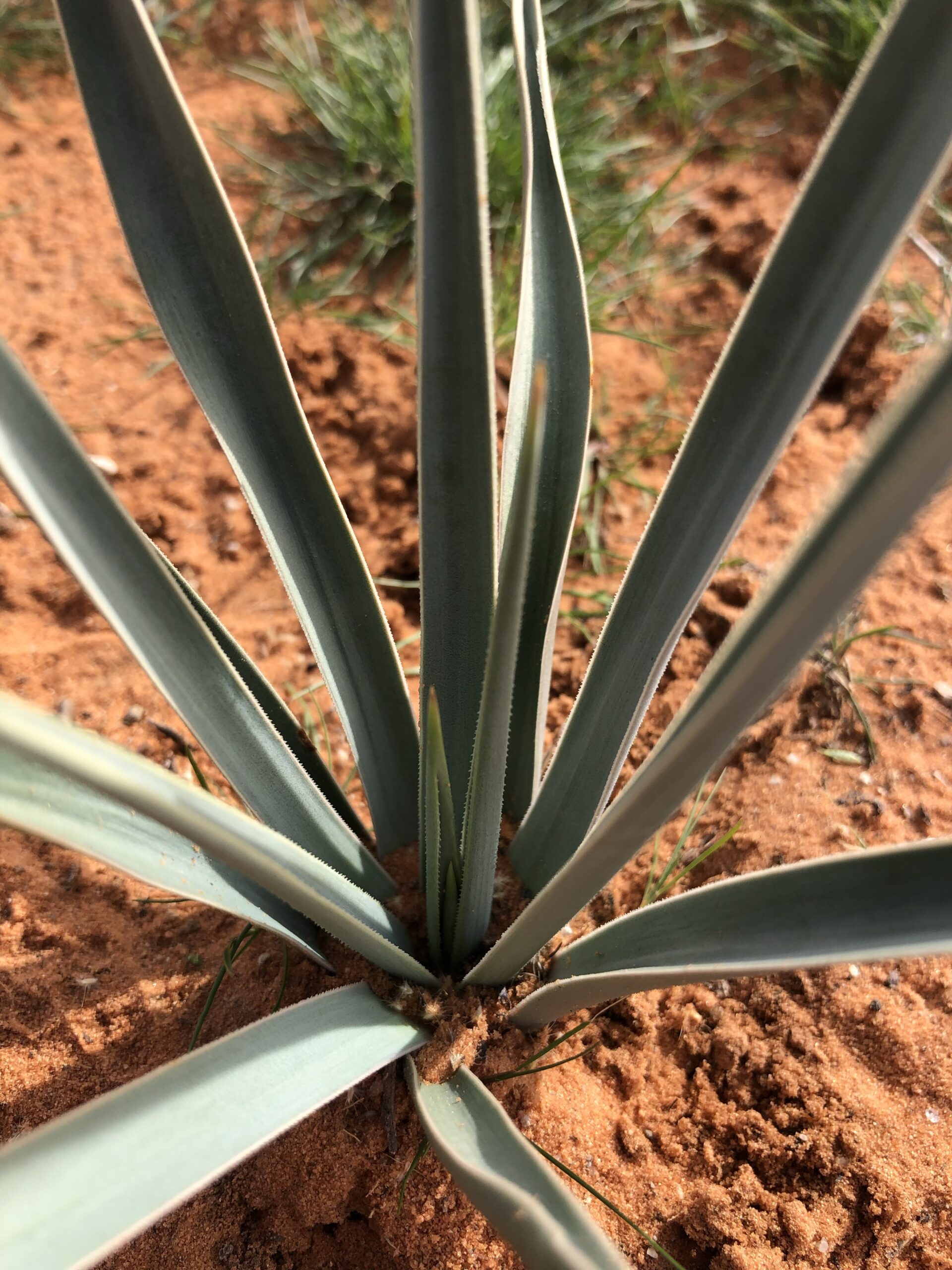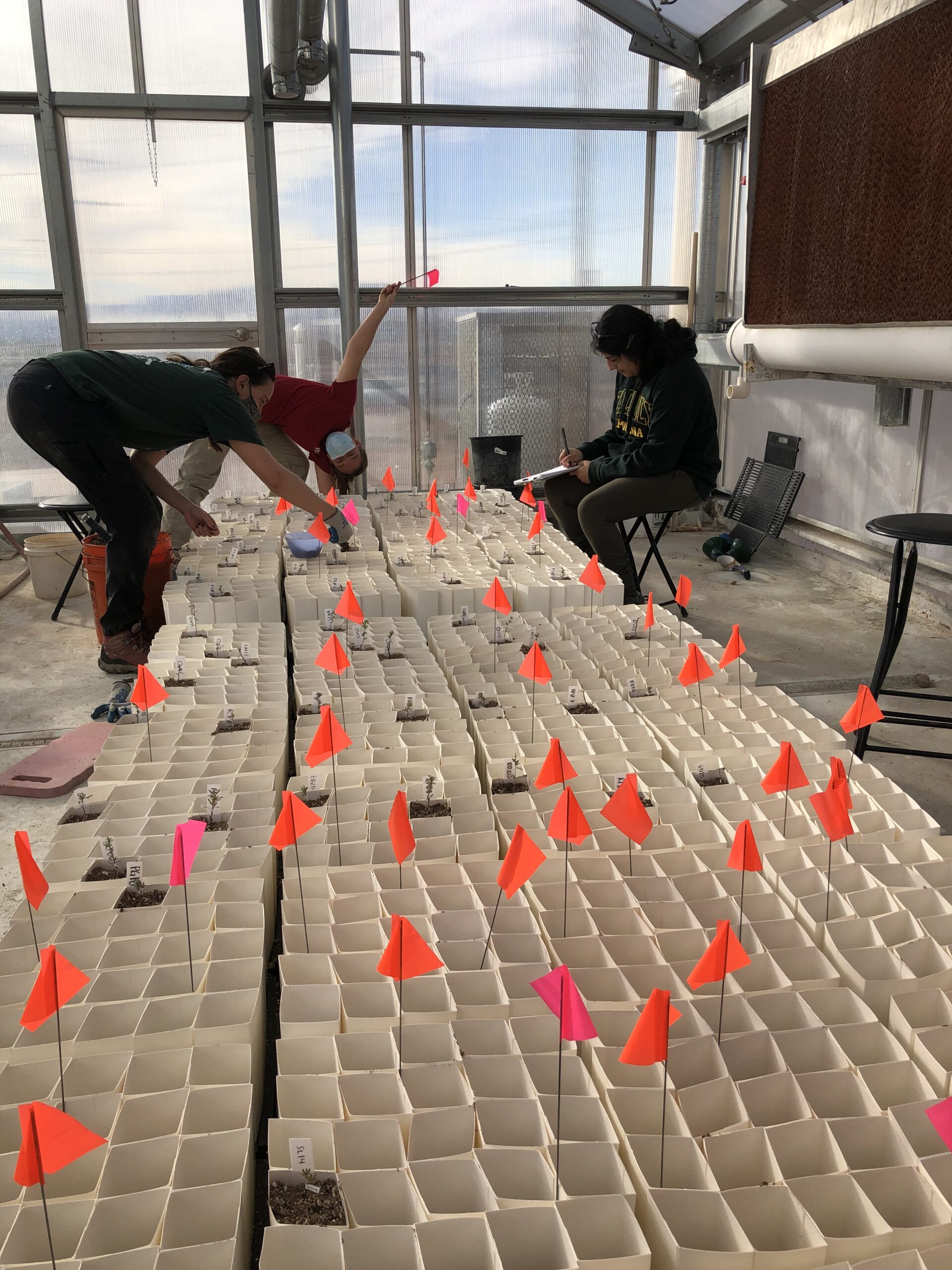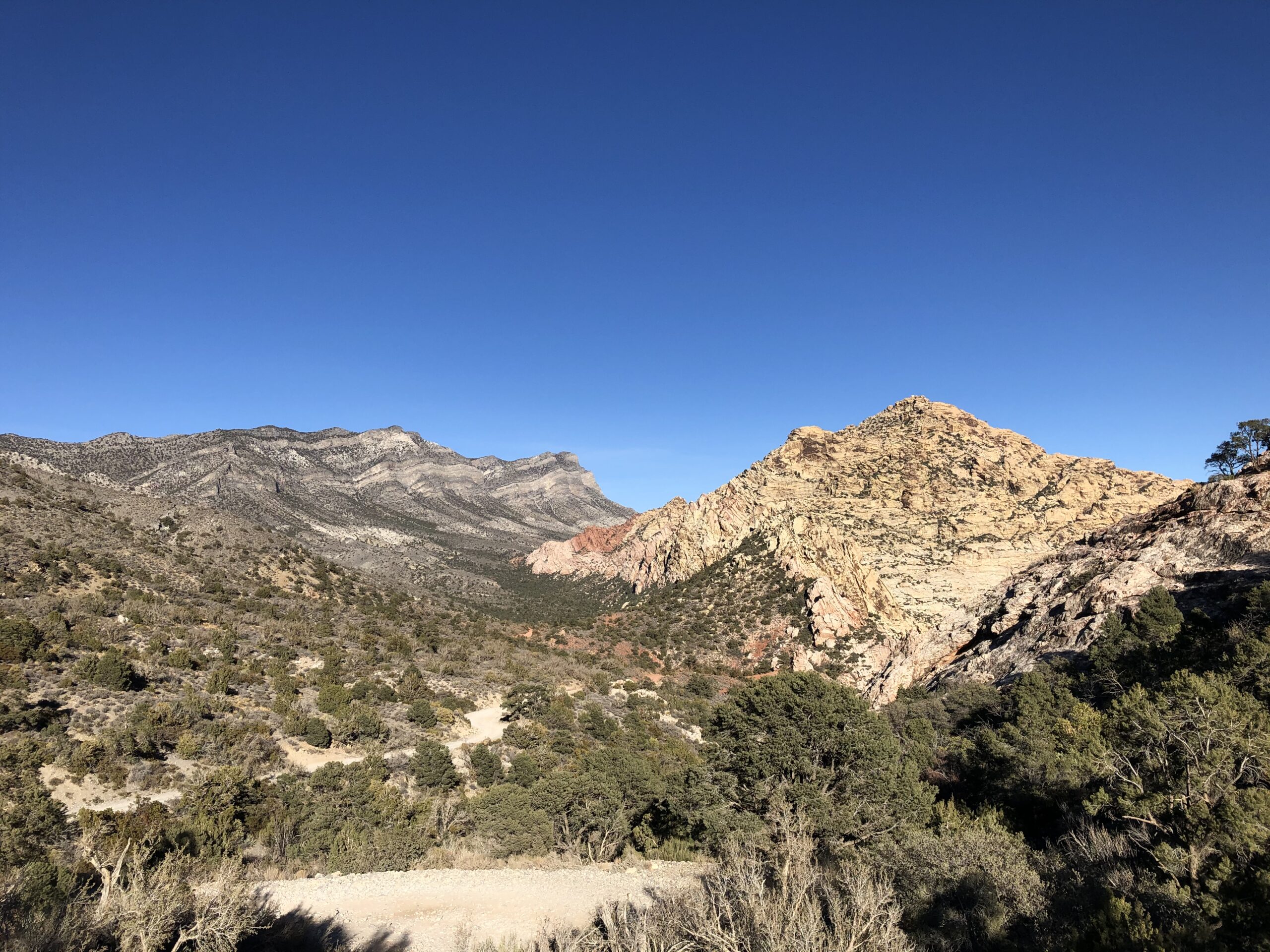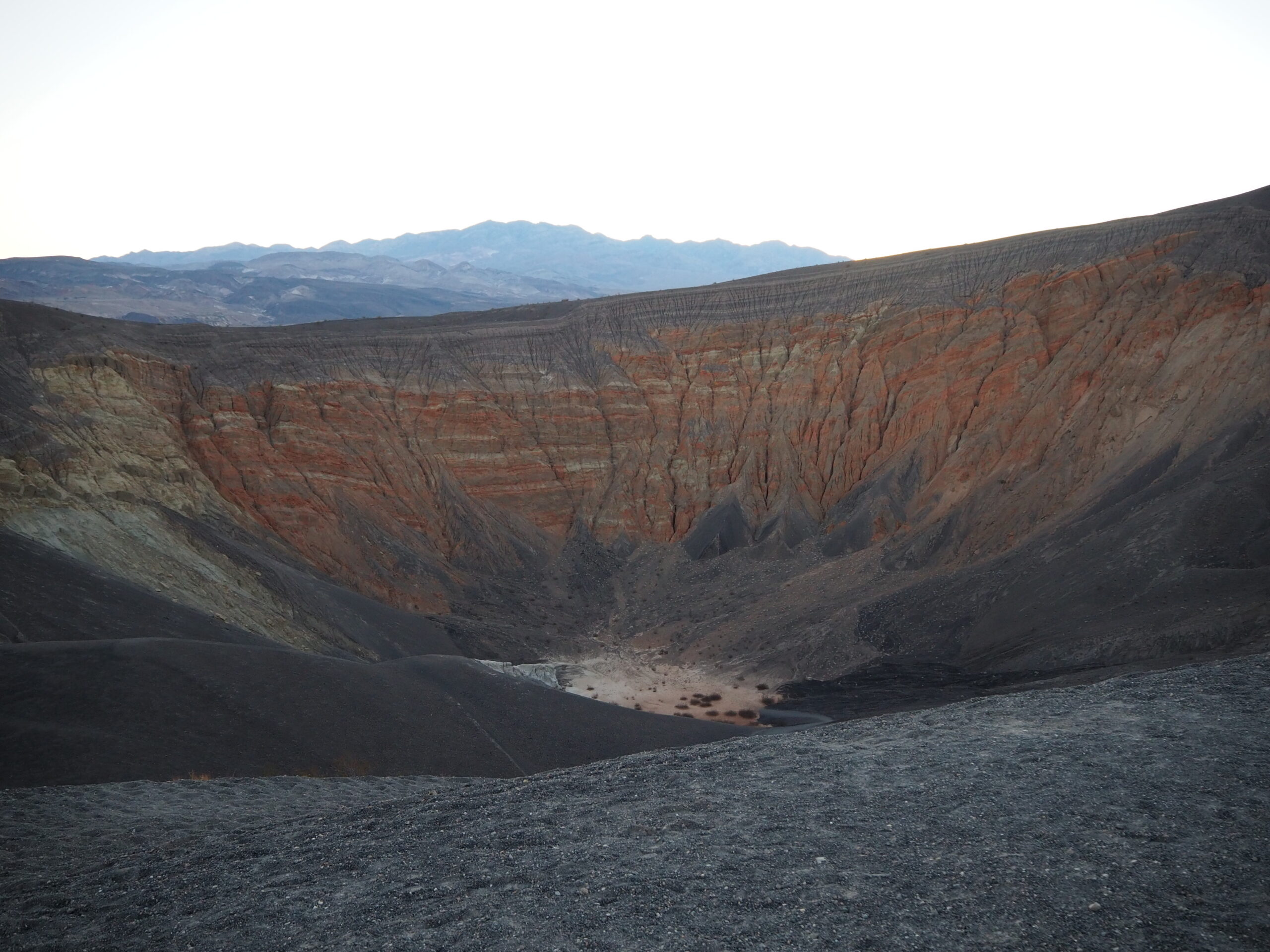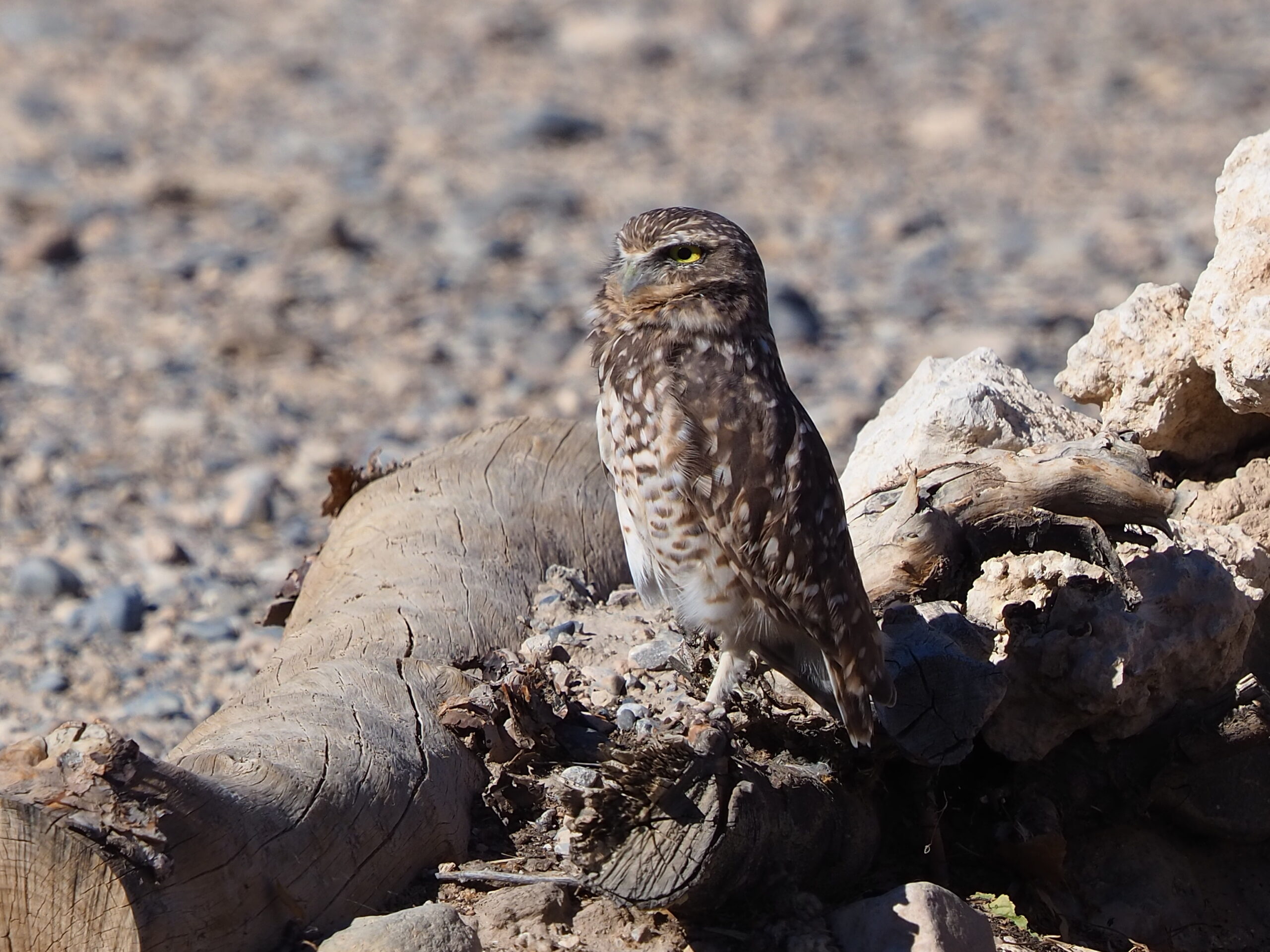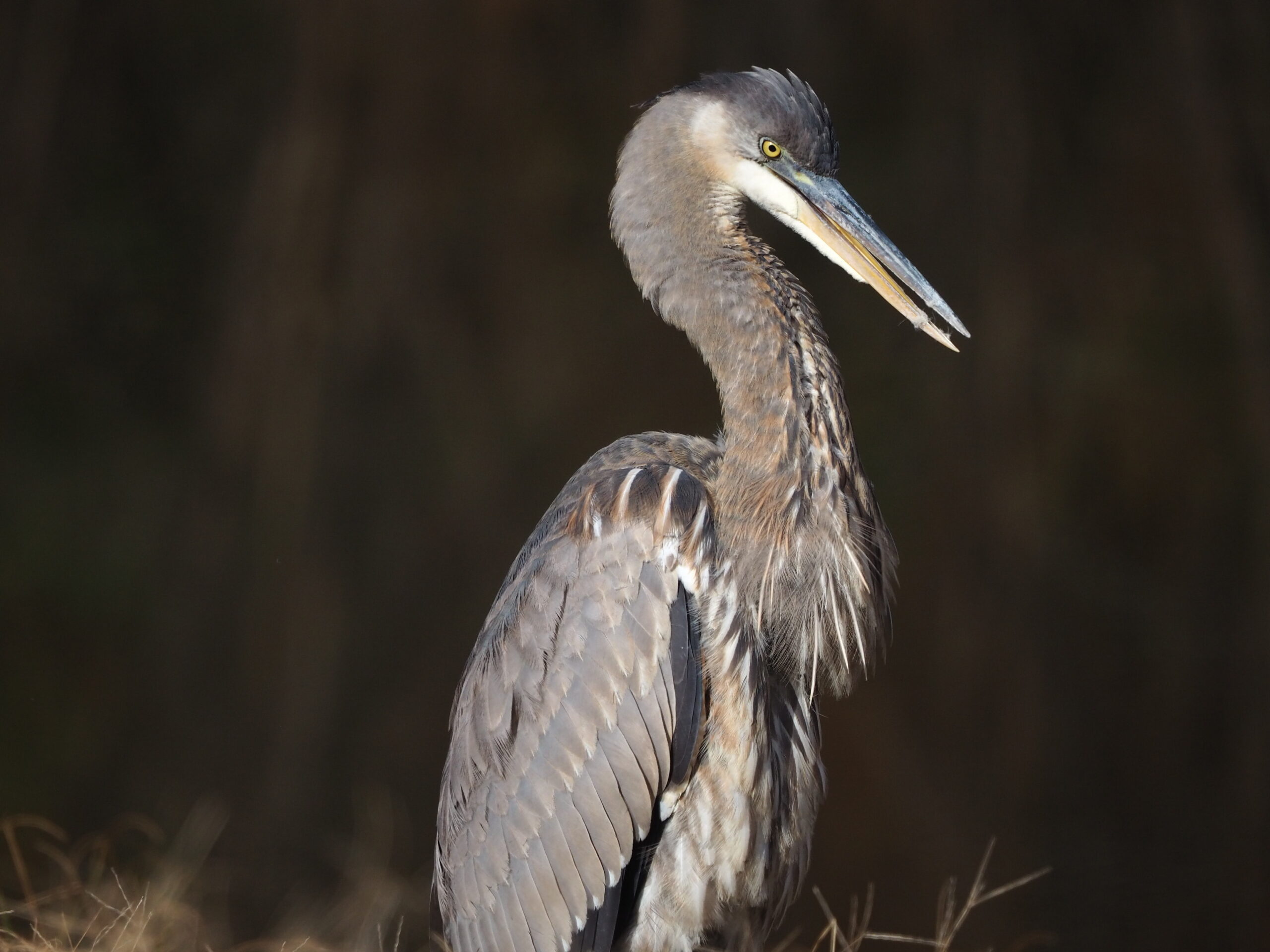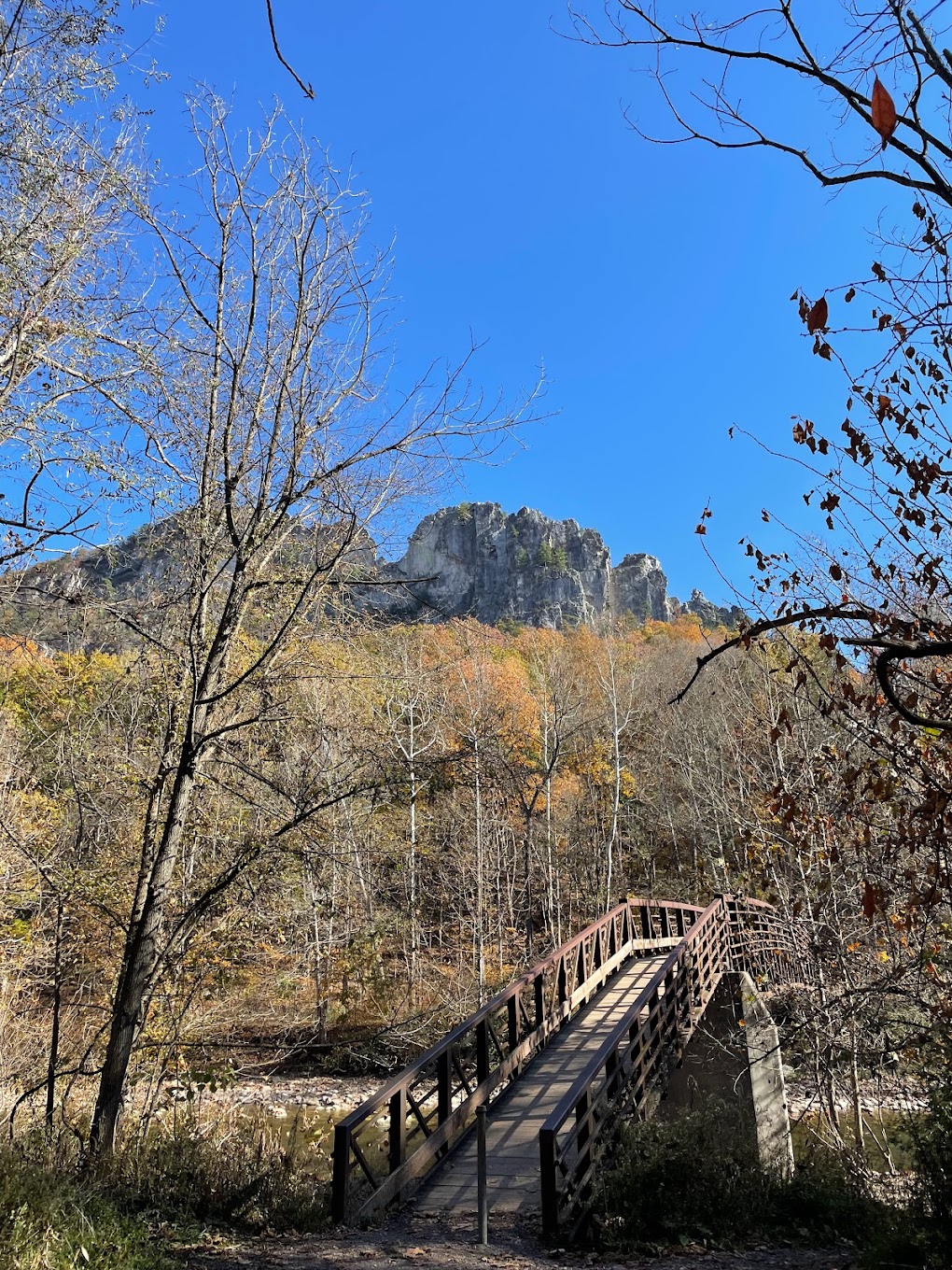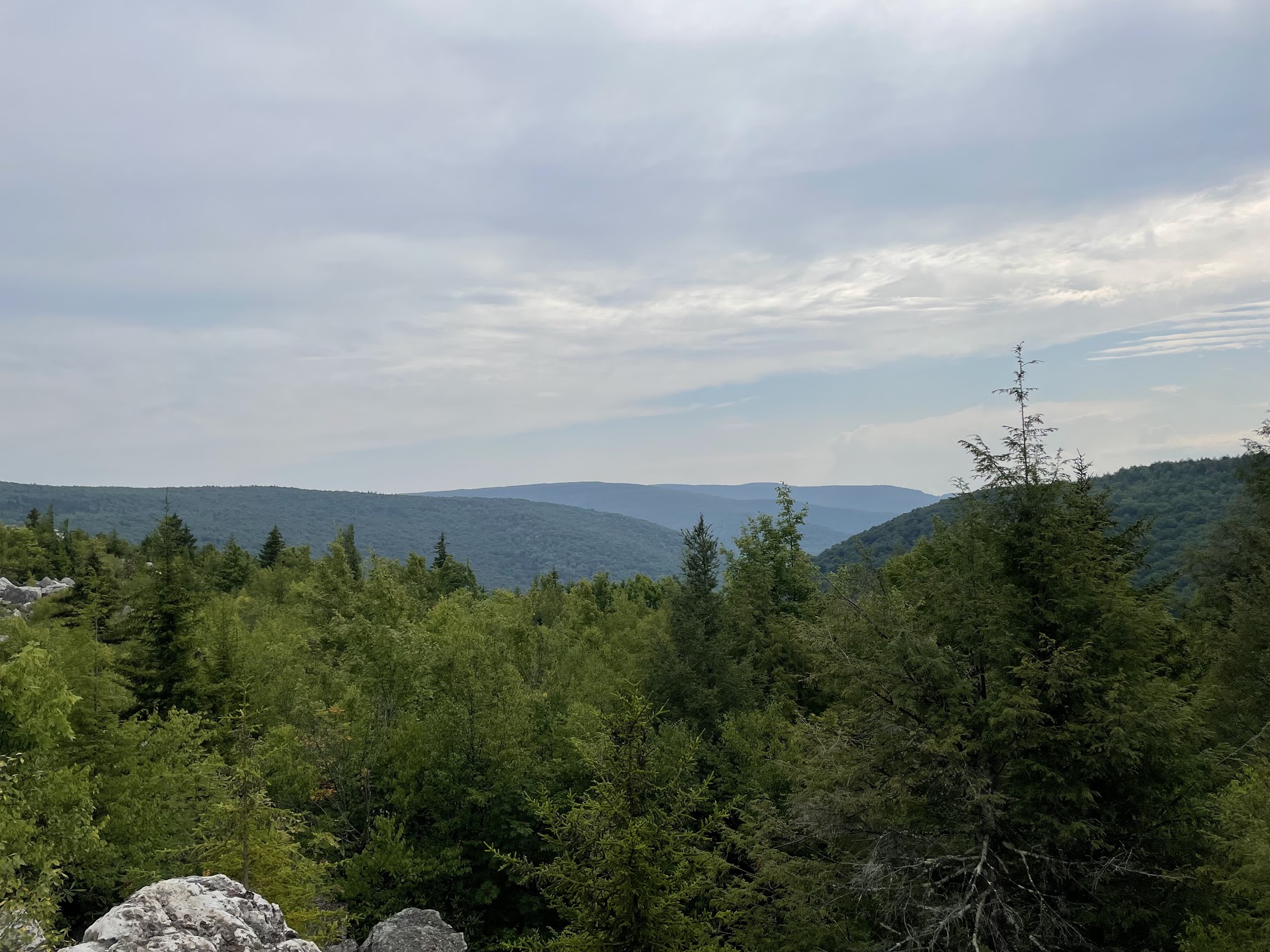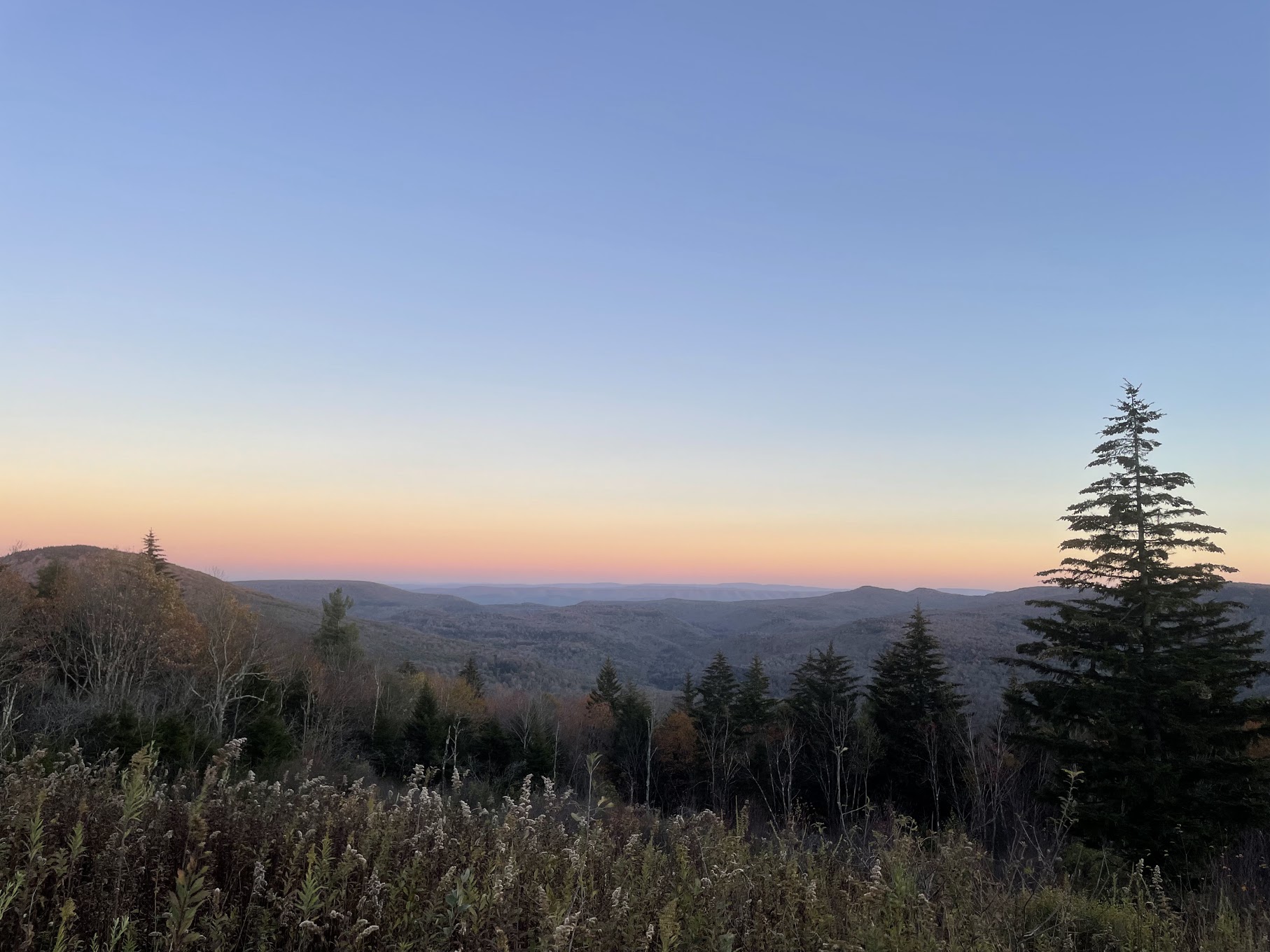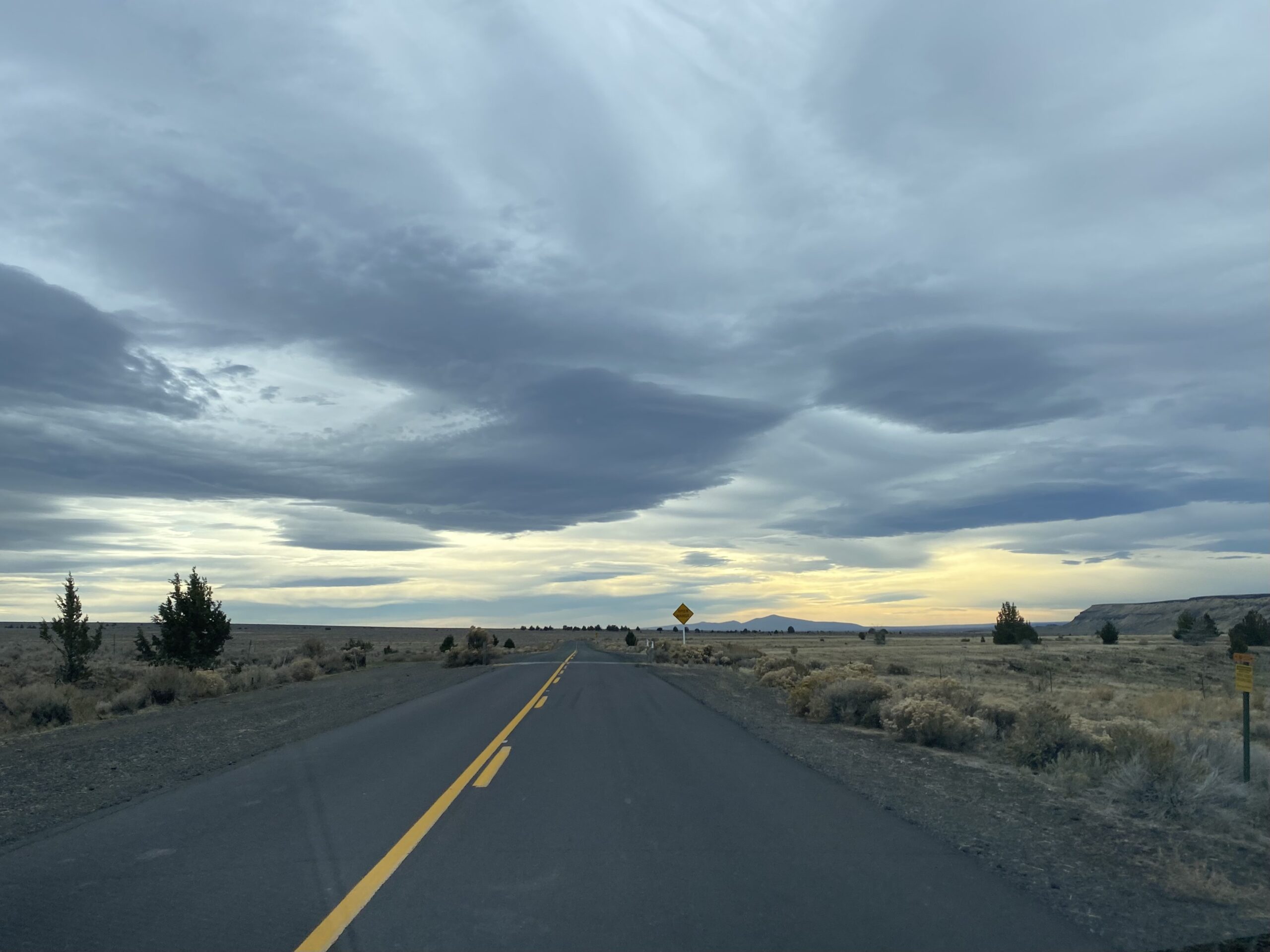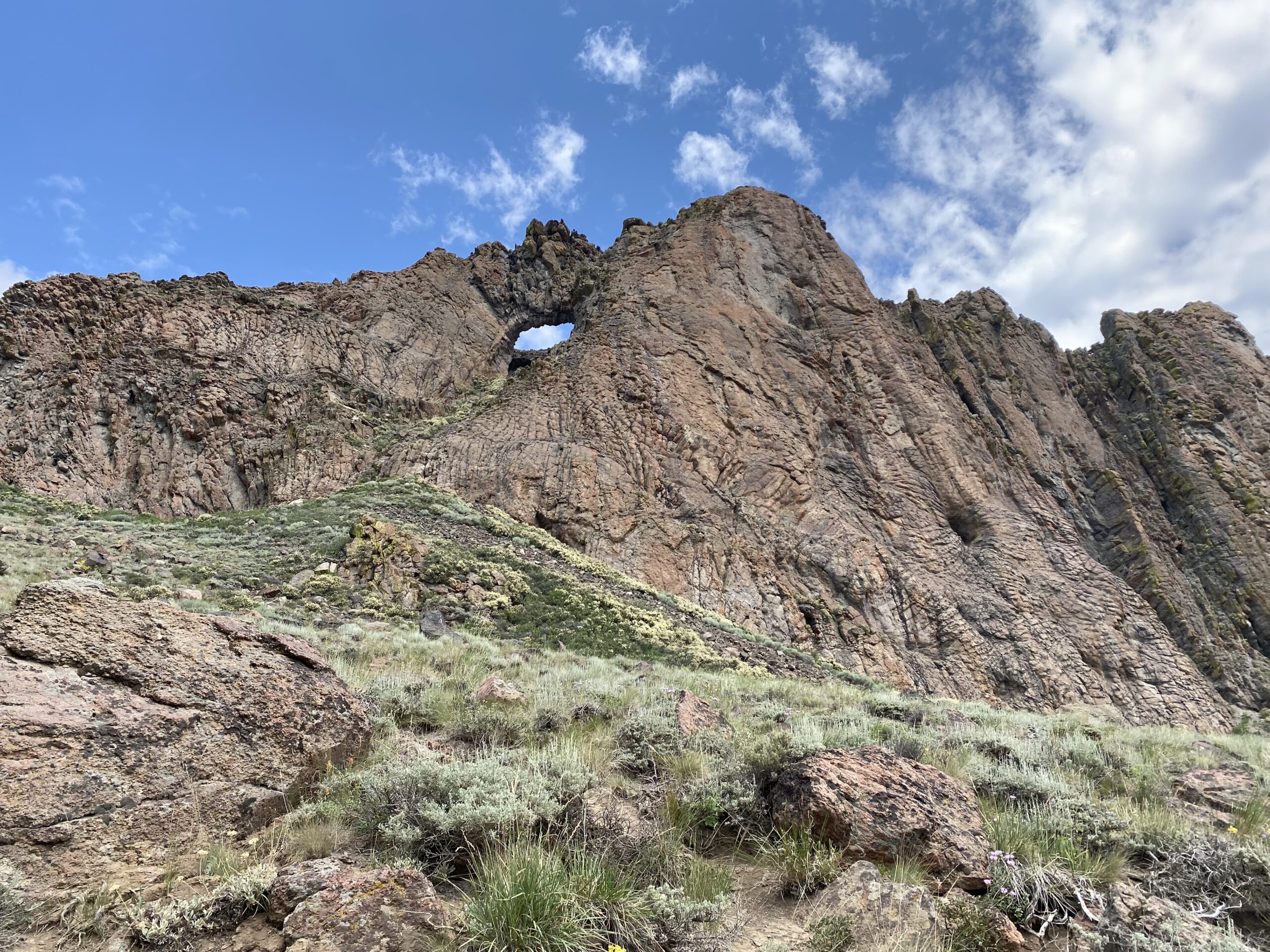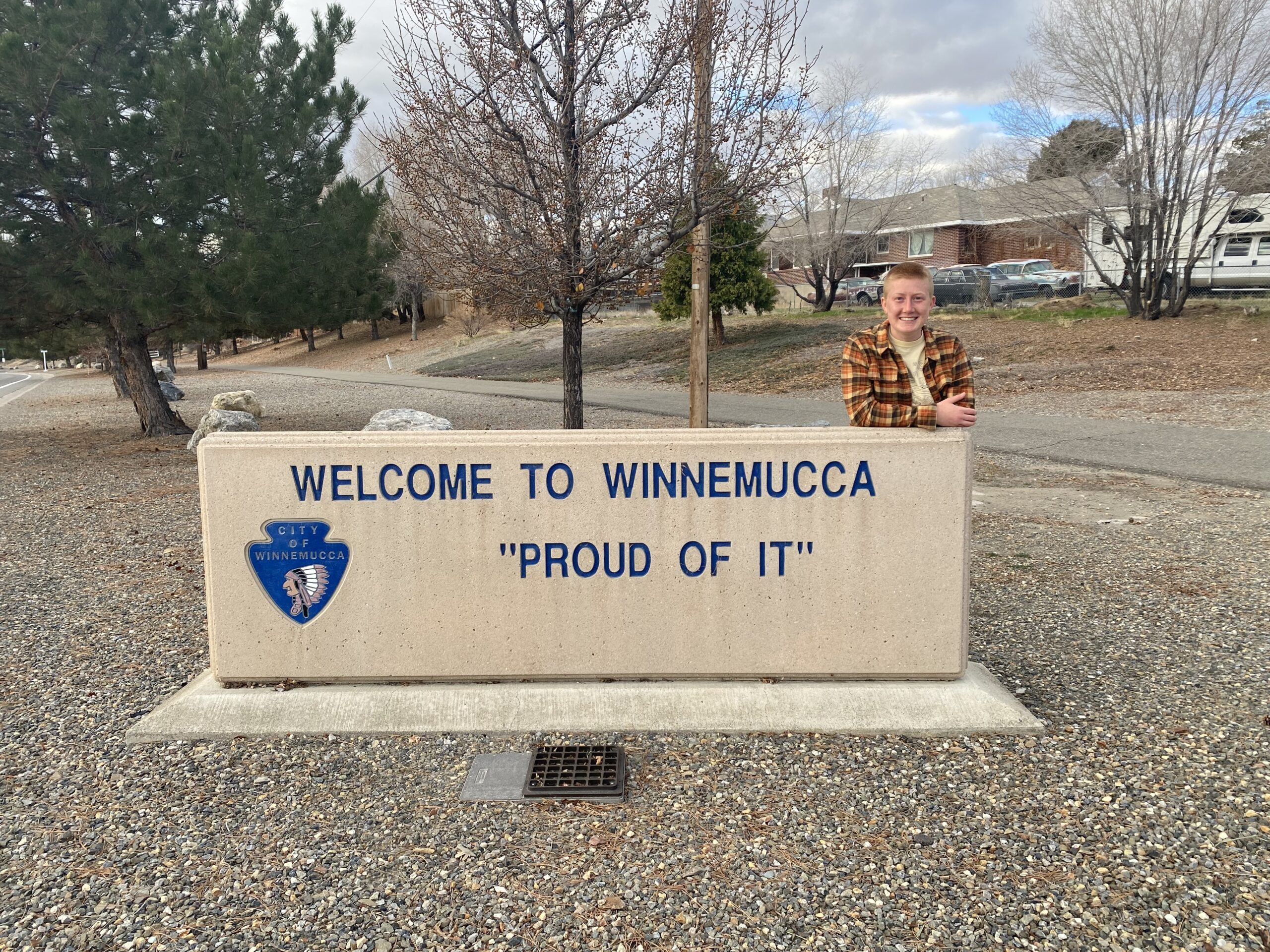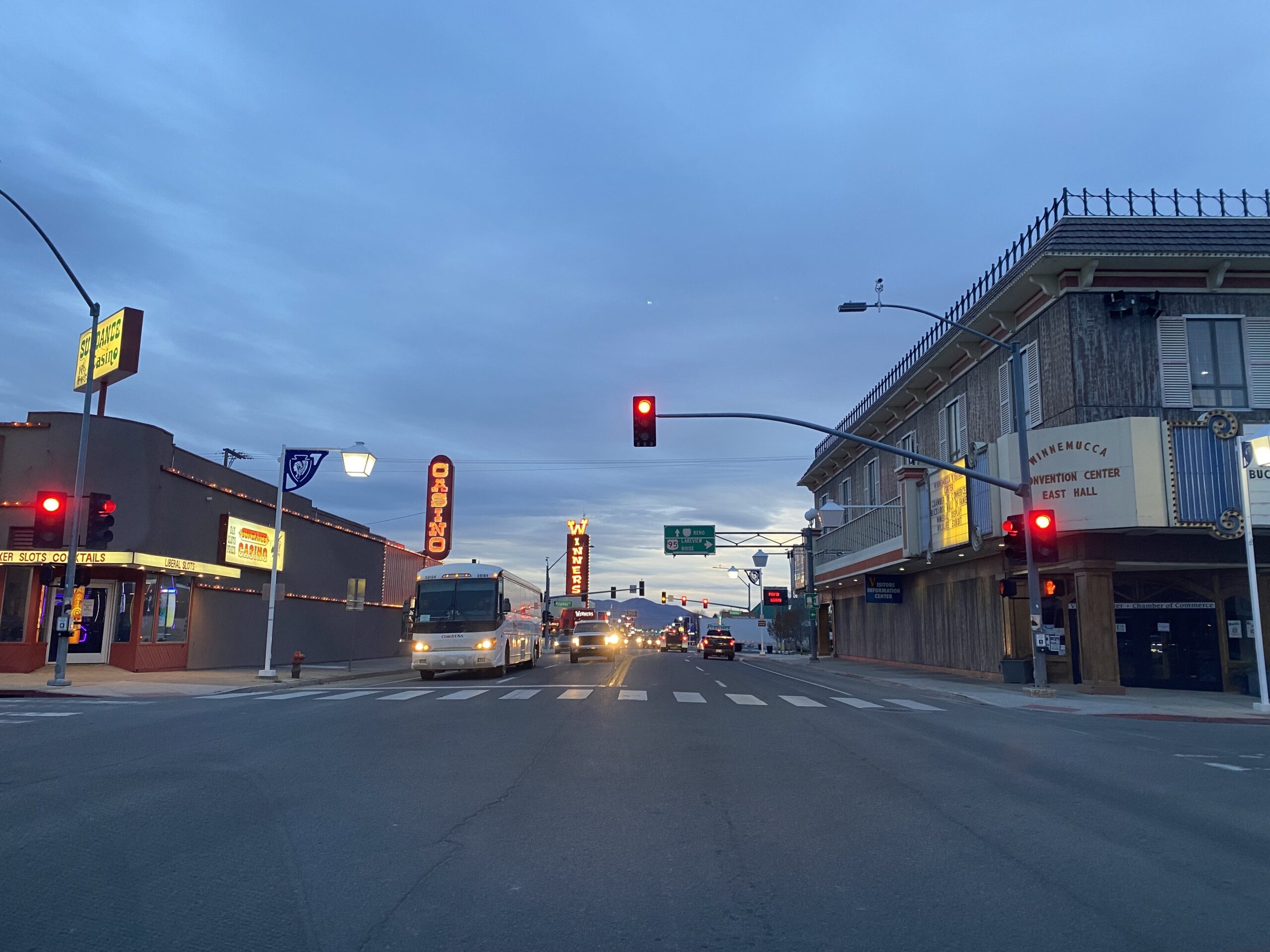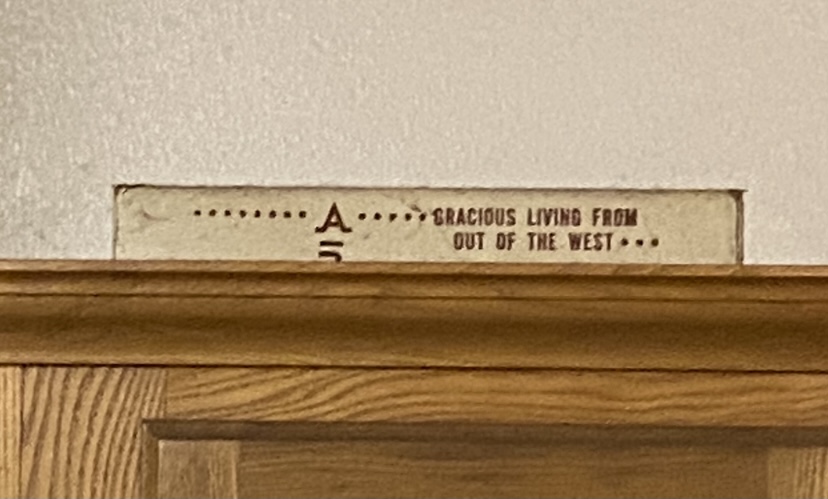Hello! My name is Maddy Czymmek, and I’m one of two new interns with the Chicago Botanic Garden at the Boulder City USGS office. I’m working on the Joshua Tree Genome Project to understand how Joshua Trees are responding to climate change.

After a 36 hour drive from my hometown: Ithaca, New York, it was a week of adjustments (which was to be expected from moving across the country)!
In the past, when I’ve been driving to a new place and the scenery starts to change, excitement comes over me. 20 or so hours into my road trip, it finally started happening, after the flat landscapes of western Oklahoma, southern Texas and Eastern New Mexico finally started to change. First with a few distant plateaus, then the Sandia Mountains ahead of me that I soon caught up with. As the sun set, I kept peaking in my rearview mirror, watching the cloudless sky become a light pink; the mountains a pale purple. The following evening, I had a similar feeling of awe. This time, I was nearing the Black Mountains bordering Arizona and Nevada. I came around a bend and the view opened up to a sea of purple mountains, various shades of purple waves stretching out to the horizon. The sun was setting again, creating a hazy, endless look to the mountains around me. So there was that feeling again. Entranced by this beautiful view. And excited that this was part of my new home that I’d get to explore for the next 6 months!
The landscape here is such a change from upstate New York’s lakes and rolling hills covered with a mix of farmland and forests. Looking around the area, it holds so much I know nothing about: the geology of the mountains and rock formations and so many plants I’ve never seen before that I want to be able to identify. Although my main internship project is focused on Joshua Trees, learning about desert ecosystems and whatever I can about the greater Las Vegas and Mojave Desert region, including issues related to climate change, water scarcity, and land degradation are also a priority for me. Living here and exploring is a learning experience on its own.
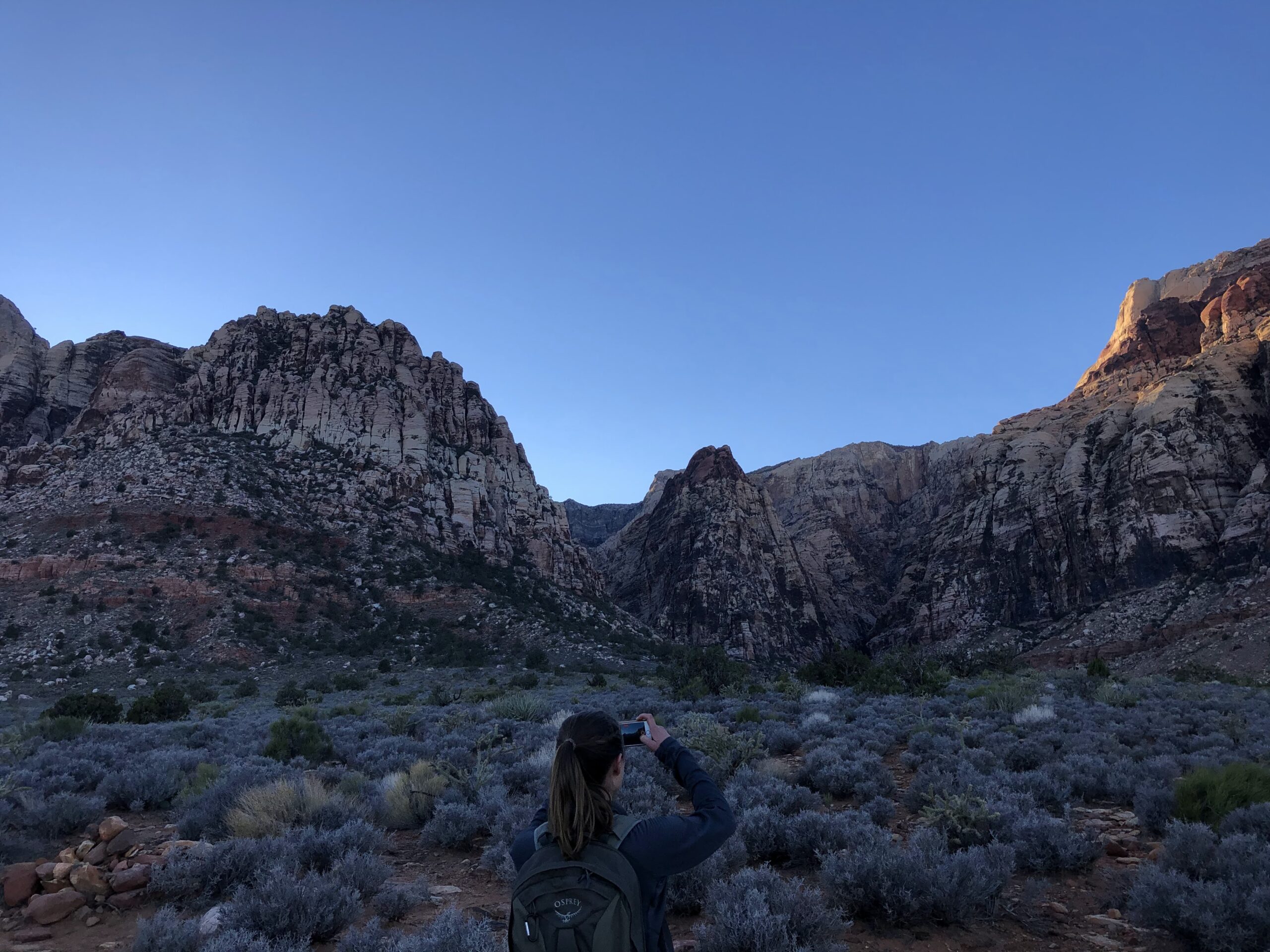
So here I am, nearing the end of week 3. My co-intern, Bridget, and I are getting into the workflow of greenhouse seedling maintenance and checking the incubating seeds. The seeds are separated by matriline onto petri dishes and kept in the incubator while waiting for them to germinate. For anyone unfamiliar with what a matriline is: for this project, groups of related seeds from separate geographical locations were collected and are referred to as different matrilines. It’s been interesting to note differences among the matrilines even at the seed stage. One group in particular has shown noticeably slow germination, has had many seeds develop a cloudy sheen and yellow leakage underneath them, and multiple seeds that have germinated have had drooping or even mushy radicles –not to mention the rancid smell when we take the lid off the petri dish! On the other end, some have been producing beautiful radicles that are long and sturdy with root hairs.
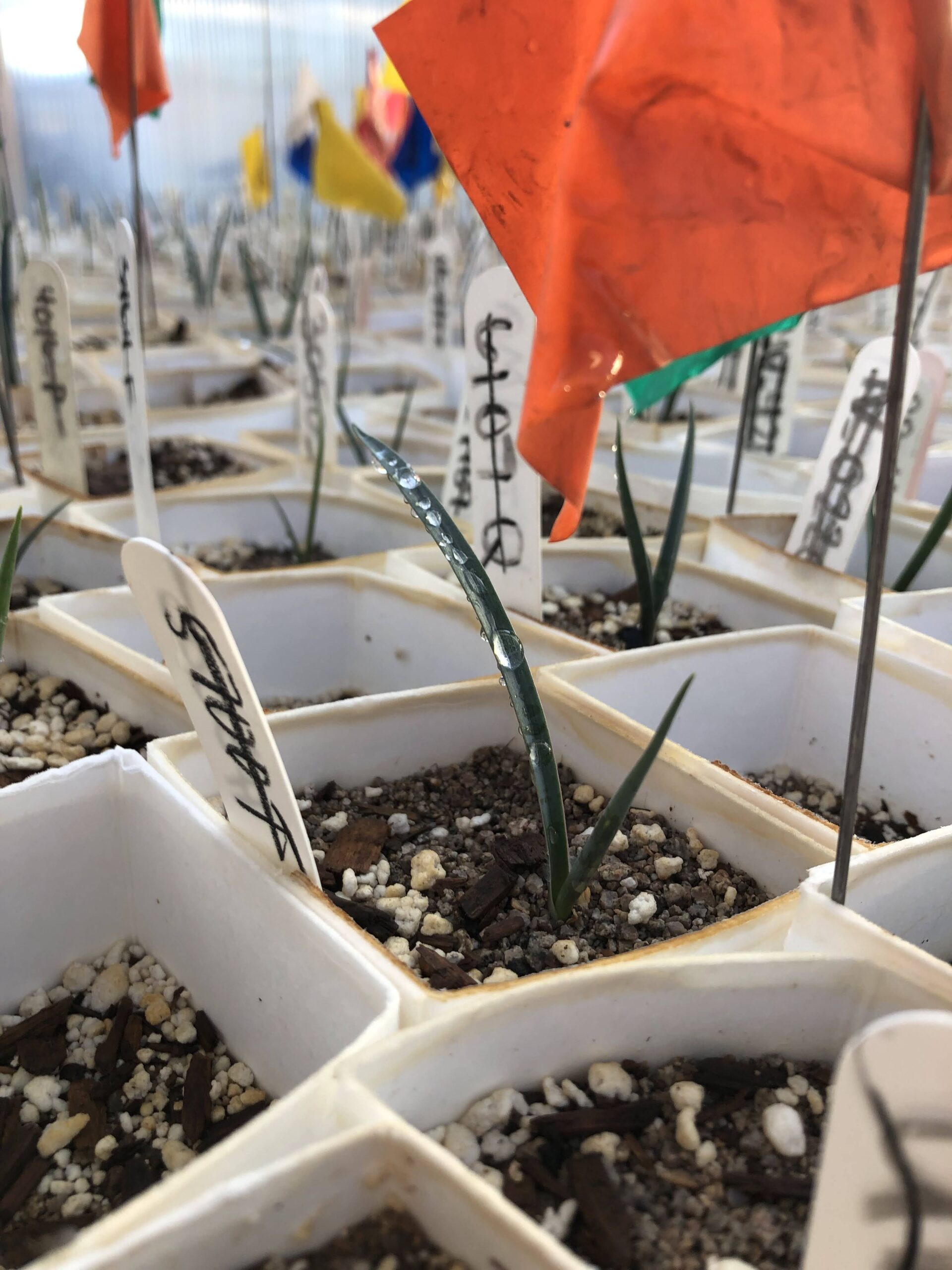
This week, we were able to visit the Cactus Mine Garden (about 30 minutes from Boulder City) and the Ridgecrest Garden (about 4 hours from Boulder City)! I’ve always thought it was cool that there’s so much public land out West, while most of NY is covered in “No Trespassing” signs. But especially with Covid, they are noticing an increase in land use and degradation. That was clear at Cactus Mine, where there were ATV and motocross tracks across the land, trash –even a deserted jet ski– and holes in the garden fence from people shooting at it. I’m not sure what could help improve land stewardship practices, but it was disheartening to see. Not only is it frustrating for maintaining the garden, but also the surrounding habitat that is broken up and disturbed by this destruction and trashing.

To avoid ending on a heavy note, we got some rain in the desert this week! I’m not sure if I’ve ever been excited for rain in my life (back home, we usually get enough rain and cloudy days that it’s typically not something I look forward to). However, in the desert, especially since this area has been in a long drought, it actually felt like something to celebrate! We’re hoping that if we keep getting some rain, the wildflowers will pop for us in the spring, fingers crossed!


